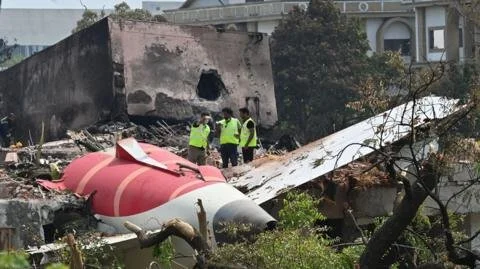Tragedy in the Skies: Who's Really to Blame for the Air India Crash?
In the wake of the Air India Flight 171 incident that occurred on June 12, which led to the unfortunate loss of 260 lives, the investigation into the crash has sparked heated controversy. Just 32 seconds after taking off from Ahmedabad en route to London, the aircraft crashed into a building, leaving many questions unanswered. Critics of the initial interim report, released in July, have pointed fingers at the findings, which they argue improperly concentrated on the pilots’ actions, thereby overshadowing potential technical faults with the aircraft itself.
Recently, a judge from India’s Supreme Court suggested that assigning blame to Captain Sumeet Sabharwal was premature, reinforcing doubts cast on the investigation’s focus. During a recent aviation summit, Campbell Wilson, Air India’s CEO, mourned the devastating impact of the tragedy while asserting that preliminary investigations indicated no mechanical issues with the aircraft or its engines.
The investigation follows standard protocols led by India’s Air Accident Investigation Bureau (AAIB), and includes participation from US officials due to the aircraft’s design and manufacture by an American company. A pivotal element of contention arises from the AAIB’s report, which indicated that shortly after takeoff, the fuel cutoff switches were inadvertently moved to the ‘cutoff’ position, leading to a loss of thrust. This was further complicated by an exchange between the co-pilots that hinted at possible confusion or errors, triggering speculation about pilot error, or, controversially, even pilot suicide.
Opinions diverge sharply, with some experts suggesting that the blame shifting towards the pilots lacks context and fails to examine crucial technical anomalies. For instance, Capt. Amit Singh has proposed that an electrical disturbance could have initiated the engine shutdown rather than pilot error. This viewpoint is echoed by organizations like the Foundation for Aviation Safety, which criticizes the public narrative as an unfair instinct to cast blame on pilots swiftly.
The Supreme Court is currently reviewing a petition for an independent inquiry, as calls for justice and an unbiased investigation continue to resonate. Until the final report is released, which could take up to a year, the speculation around pilot accountability versus possible mechanical failure will linger, leaving the true causes clouded in uncertainty. Boeing has reasserted the safety of its 787 model amid the growing concerns regarding safety protocols and the investigative process.

